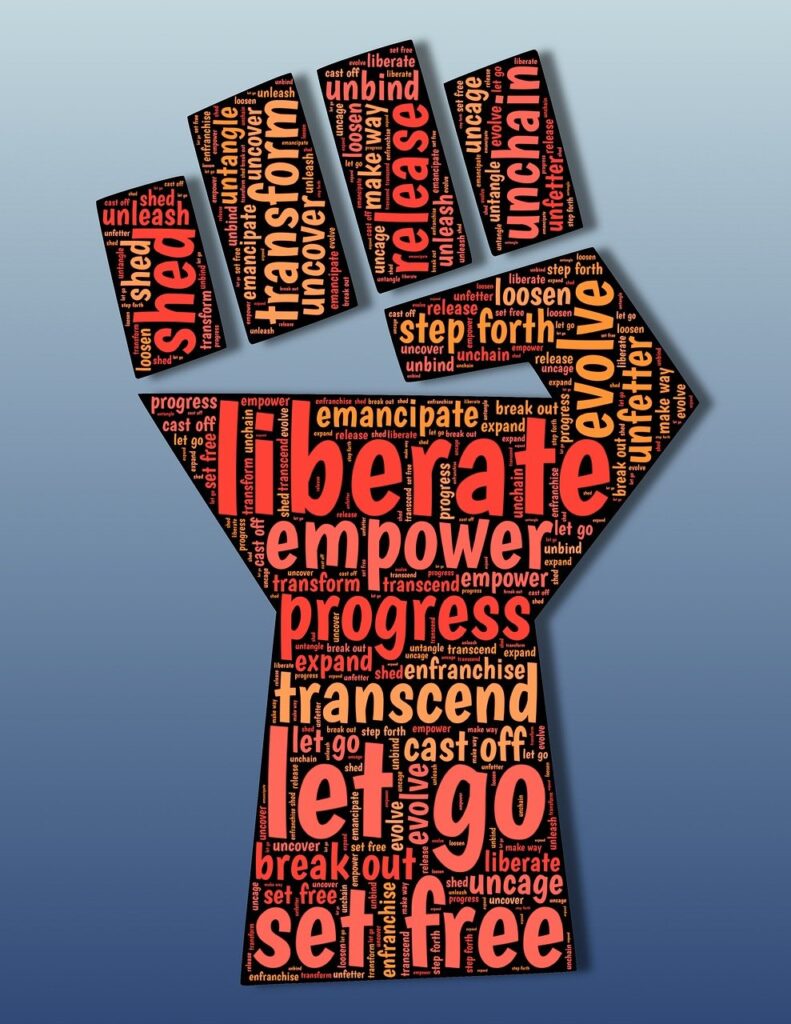Liberation!

“Yoga has always had liberation as its aim. Liberation has multiple meanings. Often in its early usage in yogic texts as kaivalya it is referring to freedom from illusion of the cycle of suffering that humans experience. Liberation is the awareness of our true nature as always already interconnected to everything else. It is the realization of no separation between oneself and others…In the West, we often take the opposite view. Liberation is seen as an individualistic expression of self where our desires run rampant. This is not the kind of freedom that yoga promises.”
Embrace Yoga’s Roots – pgs 180-181
Chapter VI in Embrace Yoga’s Roots carries us into the action of liberation. Susanna Barkataki has spent most of the book giving all the ways that the West seems to have separated from the roots of yoga practice. However, it is clear that as we embrace yoga’s roots we also embrace our own roots and this is ultimate liberation.
The “Yoga of Action” – Kriya Yoga – as described in the second Chapter of The Yoga Sutras of Patanjali, has three main parts: Tapas, Svadhyaya, and Isvara pranidhanani. Tapas is a disciplined and aware practice with passion and devotion. To view yoga as “just an exercise” or an attachment to individualistic self and achievement is to miss the full liberation of yoga. Complete discipline of the body and mind ultimately brings the “cessation of movements of the consciousness” (yoga sutra I.2) which is the promised definition of yoga.
Part 2 in Chapter VI reminds us of the first two limbs of the “eight limbed” path of yoga, where our practice of svadhyaya (self study) begins. The Yamas (moral precepts) and Niyamas (personal observances) make up the ethical foundations of practice and highlight the qualities we might study in ourself and our actions through all the other limbs to come – on and off the mat. As Susanna has pointed out throughout the book, it is important to know that the actions of yoga are not only within our postures. To act, reflect, and then be open to change is the process of yoga and the process of our ethics for ourselves and our communities. This might be messy and imperfect, and it is ok. Ultimately we are asked to not get attached to the fruits of any action – Isvara pranidhanani. Our job is to act in a manner that causes the least separation, harm, violence, etc…and then surrender any of the results to whatever higher power (internal or external) we might trust.
Part 3 of this Chapter continues into “how to structure a yoga class” specifically through the lens of embracing yoga’s roots. It is nice to know that Iyengar Yoga does already embrace much of the holistic practice of yoga. We have a lineage that we continue to acknowledge through images, stories, and the chanting of the invocation to Patanjali. Yoga philosophy is peppered into classes in differing ways depending on the teacher – subtle weaving to direct reading. We use Sanskrit as the language of yoga. And, Prashant Iyengar reminds us of many of the deeper practices mentioned on pages 201-202 such as bandhas and mantras.
My reflection on how Western Iyengar Yoga practitioners and teachers could continue to work toward less colonialism and white supremacy in yoga classes, according to Susanna Barkataki, is in the “consolidation of knowledge and power” (pg 60) and the focus on “perfectionism” (pg 77) in posture. Each Indian Iyengar teacher I have spent time with has continued to turn the table of power in practice and knowledge back onto the student. Yes, Indian teachers are direct and commanding in their voice and demeanor, but that is not a demand of giving up your power or autonomy, or to cover up your own inner teacher. I was reminded just yesterday by an Indian teacher that Geeta Iyengar continuously just asked us to try…and as I have mentioned numerous times, her common refrain was “you find out!”. To be perfect in the pose was not the goal, but not to try or be willing to change is already a failure. The approach of the Iyengars to adjust every pose for every body in and of itself avoids the need for perfection and focuses on the benefit and not accomplishment (pg 192) of every pose. “Whether someone is practicing a shape on the ground, a chair or standing, the benefit of the asana should be similar” (pg 192). Again, the demand is to try to your capacity, not to avoid, and then find out through disciplined practice what the benefit is. The poses are not there to conquer and check off a list. It would be great to liberate ourselves from such narrow confines.
I will close this with another personal reflection, as Susanna closes this Chapter with the discussion of the use of “namaste” as a greeting and not a closing to a yoga class. I use “namaste” at the end of class for two reasons: 1) it is what has been modeled by our Indian teachers – Prashant Iyengar most obviously after his Saturday talks and 2) because after a yoga class, the students and I are in the “spirit” of what namaste actually means – an acknowledgement of and connection to our inner self and how we all are the same within that space. This is a good example that reflection on all of what this book has brought to light may find you comfortable or uncomfortable, challenged or apathetic, ready to change or happy with what you are currently doing. The idea is not to be perfect, but to just reflect and try.
“Yoga is a lifelong path of exploration and study”
Embrace Yoga’s Roots – page 202
So what is our journey and our work now? Where do we go from here?
This Week Reading : Chapter VII – How to Continue this Work